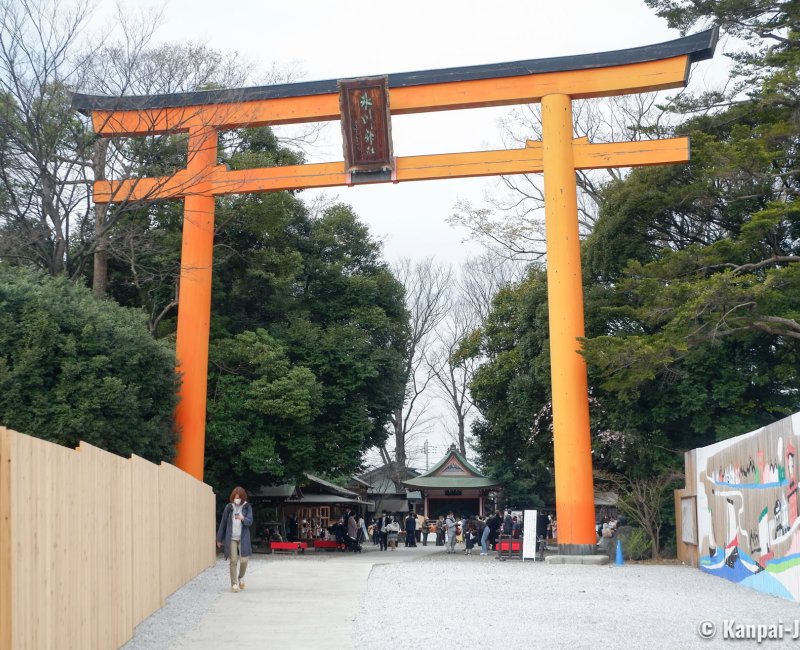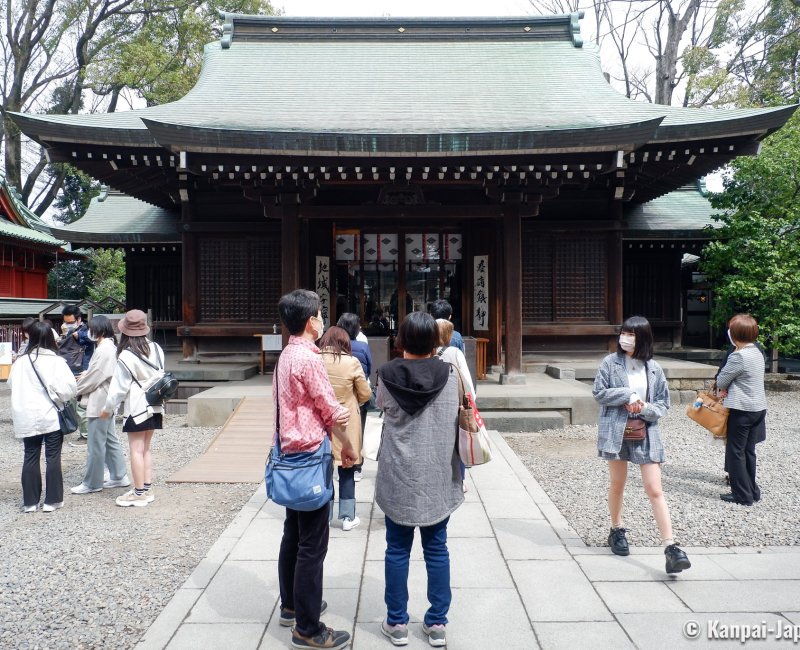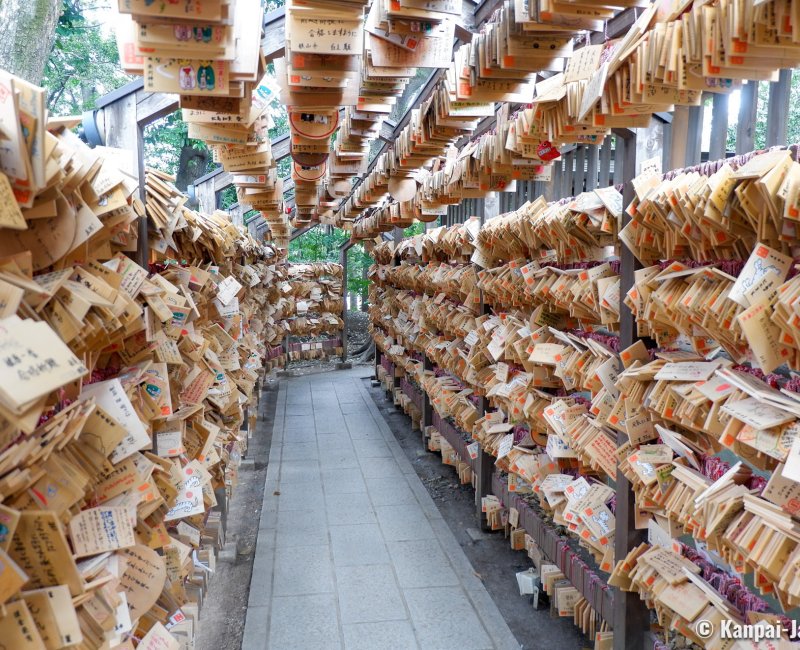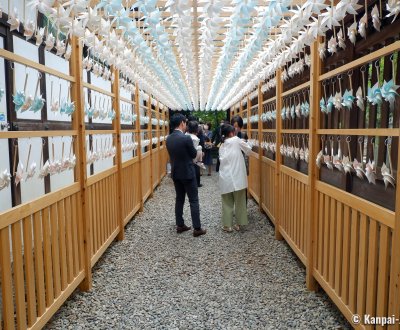Kawagoe Hikawa-jinja
Domestic Harmony Shrine
Kawagoe Hikawa-jinja is a Shinto shrine located in the center of Kawagoe City, in the heart of Saitama Prefecture in Japan. A large number of worshipers come to pray the enshrined deities couples for a thriving family and an harmonious marriage.
Kawagoe’s Hikawa shrine was founded in 541 under the reign of Emperor Kinmei (539 – 571) and is affiliated to Omiya’s Hikawa shrine located in the neighboring Saitama city.
Several kami couples are enshrined in Kawagoe Hikawa-jinja:
- Ashinazuchi no Mikoto and Tenazuchi no Mikoto,
- Susanoo no Mikoto and his spouse Kushinada-hime (who is Ashinazuchi and Tenazuchi’s daughter), and,
- Okuninushi, Susanoo and Kushinada-hime’s son.
The locals love Kawagoe Hikawa-jinja, a shrine where they celebrate the family milestones, such as weddings, births and children growing up (Shichigosan, 1rst year in school, coming of age). After a castle 🏯 was built in the city in 1457, Hikawa shrine also became Kawagoe’s main spiritual guardian (鎮守神 chinjugami) and has thus been visited by its successive ruling lords over the centuries.

The city’s Shinto guardian
Build less than 1 kilometer from the iconic Toki no Kane tower in the Kurazukuri traditional district, the shrine is within a walking distance from Kawagoe station, or a short bus ride. Several entrances are available, but the main one is marked by a large 15 meters high vermilion wooden torii ⛩️ gate.
After entering by the torii gate, you’ll find a natural spring on the left to use for purification before proceeding further in the spiritual enclosure. There is also a rock shaped in a dog head, that expectant mothers pet as a prayer for an easy childbirth.
The current honden, the main pavilion, was built in 1849 thanks to a donation of daimyo lord Matsudaira Naritsune (1797 – 1850). One can admire the wonderful wood carvings of its facades when paying respect to the kami deities. The grounds is also home to about 20 secondary shrines, which are smaller and have various functions.

Original use of protection amulets
In front of the Kagura-den, the pavilion used as a stage for ritual dances, there is an original omikuji dispenser looking like a pond and filled with sea bream paper dolls. After fishing out the omikuji doll, you can read the fortune telling hidden inside; it makes a fun game for children and adults.
Then cross the ema votive plates tunnel, where you can hang your own ema after writing your wish for protection on it. Another tunnel is sometimes set up and decorated with pinwheels, adding a pleasant and fancy touch to the wish-making ritual at this shrine. Lastly, do not forget to bow to the sacred trees (御神木 shinboku): 2 Zelkova aged more than 600 years old and connected together by a shimenawa rope.

Hikawa shrine’s main festivals
The year at the Shinto shrine is paced by many ritual celebrations and Kawagoe Hikawa-jinja is holding 2 important seasonal events:
- The enmusubi-furin 🎐 (縁むすび風鈴) festival taking place in summer: more than 2,000 Japanese wind chimes are displayed near the entrance’s purification spring, to encourage love relationships;
- Reitaisai (例大祭) matsuri and Jinkosai (神幸祭) matsuri, held in mid-October and that are among the 3 main regional festivals, with a parade of about 15 decorated floats called dashi (山車). A doll inspired from the Japanese folklore is placed at the summit of each float and seem to be fluttering in the air. These float festivals have been registered in the UNESCO Intangible Cultural Heritage list (like Gion Matsuri for example) in 2016.
Located in the north of the city center, the shrine sits along the Shingashi River’s banks that offer a beautiful spring scenery during the sakura 🌸 blossom season. Nearby, you’ll also find the former lord’s residence Honmaru Goten, on the site of Kawagoe Castle.


